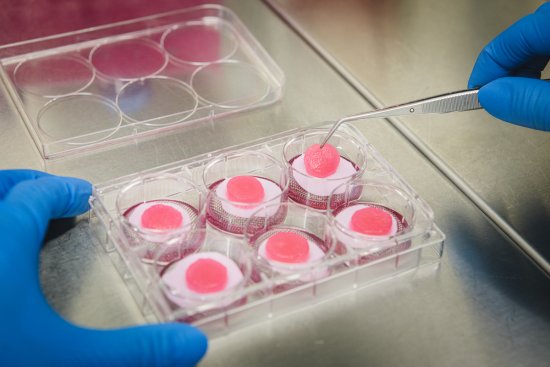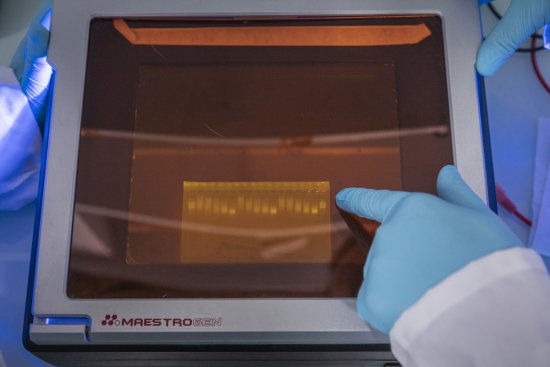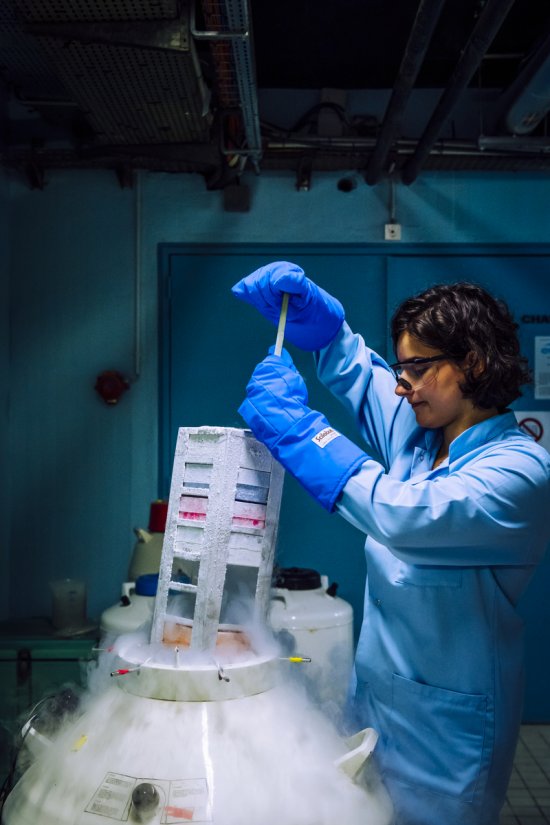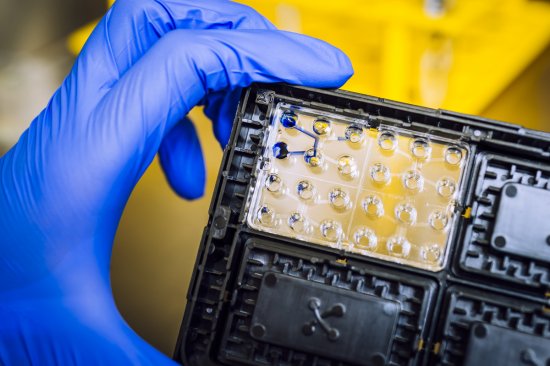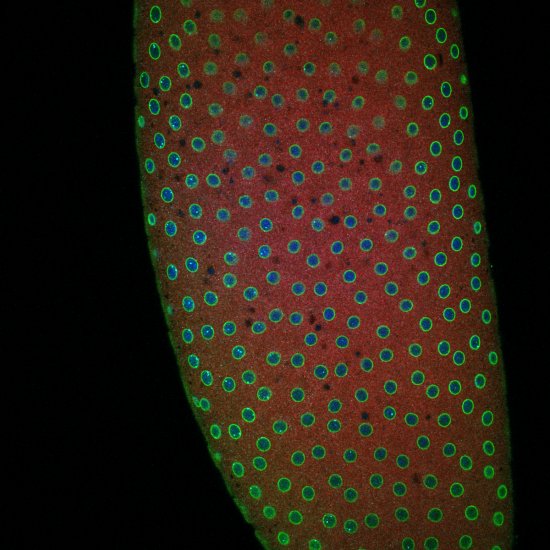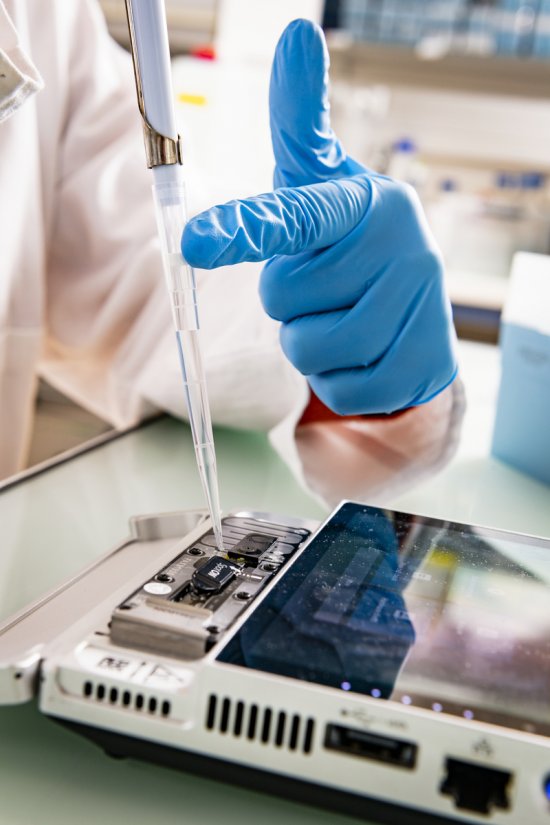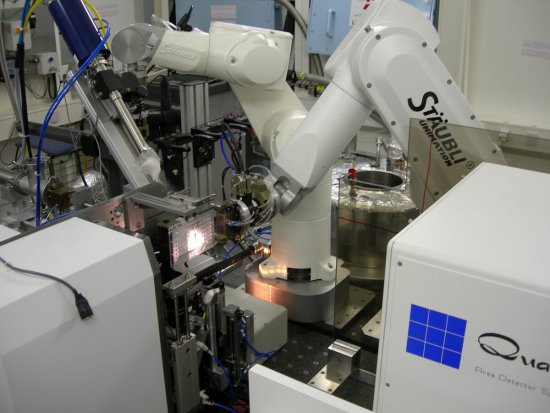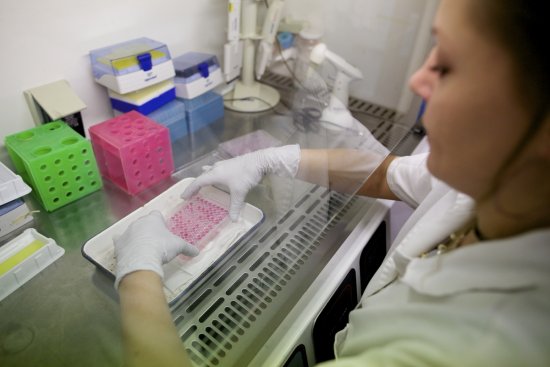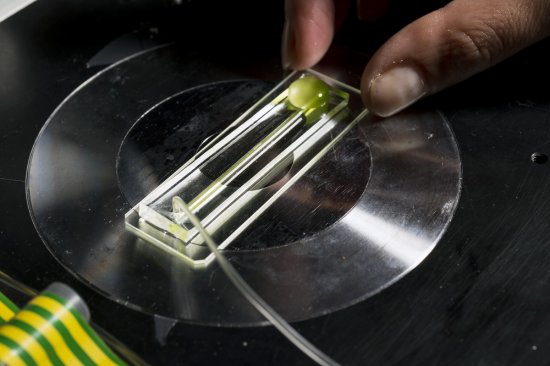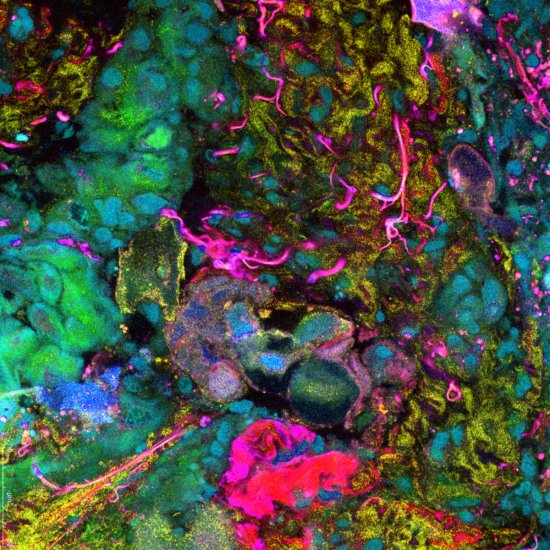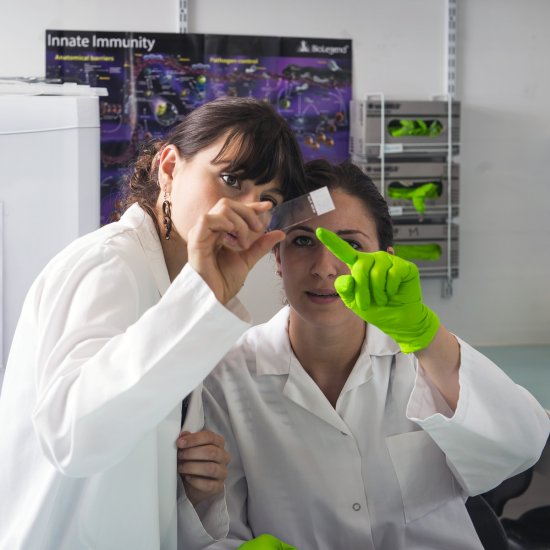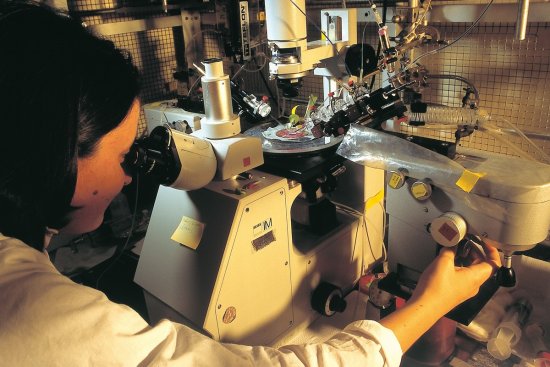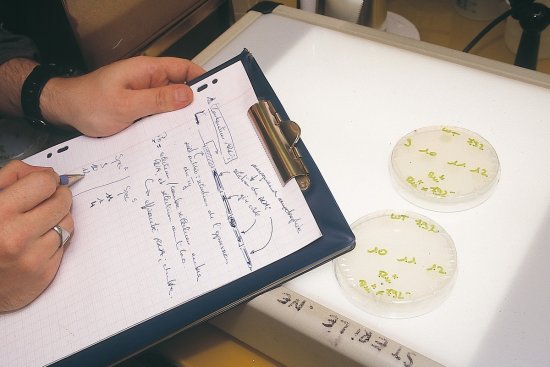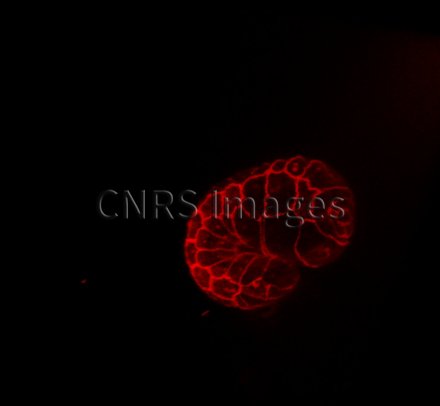
© David RODRIGUEZ/Manuela D'ALESSANDRO/Jocelyn LAPORTE/Michel LABOUESSE/UMR5534/IGBMC/LBD/CNRS Images
Reference
20160089_0004
Nuclei and the plasma membrane of the epidermal cells of a nematode worm embryo
Visualisation by immunofluorescence of the nuclei (in green) and the plasma membrane (in red) of the epidermal cells of a nematode worm embryo (Caenorhabditis elegans). The muscle fibres contain several hundred nuclei. These nuclei are normally located peripherally, but are displaced in the case of certain severe conditions such as centronuclear myopathies (CNM). Mutations in BIN1, the amphiphysin protein coding gene, appear to be at the origin of these diseases. In the C. elegans animal model, researchers have shown that amphiphysin can enable a link to be established between the nuclei and the cytoskeleton which maintains the shape and organisation of the cell. Through its action on the cytoskeleton, amphiphysin thus plays a vital role in positioning the nucleus within the cell, a mechanism conserved throughout the evolutionary process in the nematode, the mouse and humans but which is altered in certain myopathies.
The use of media visible on the CNRS Images Platform can be granted on request. Any reproduction or representation is forbidden without prior authorization from CNRS Images (except for resources under Creative Commons license).
No modification of an image may be made without the prior consent of CNRS Images.
No use of an image for advertising purposes or distribution to a third party may be made without the prior agreement of CNRS Images.
For more information, please consult our general conditions
